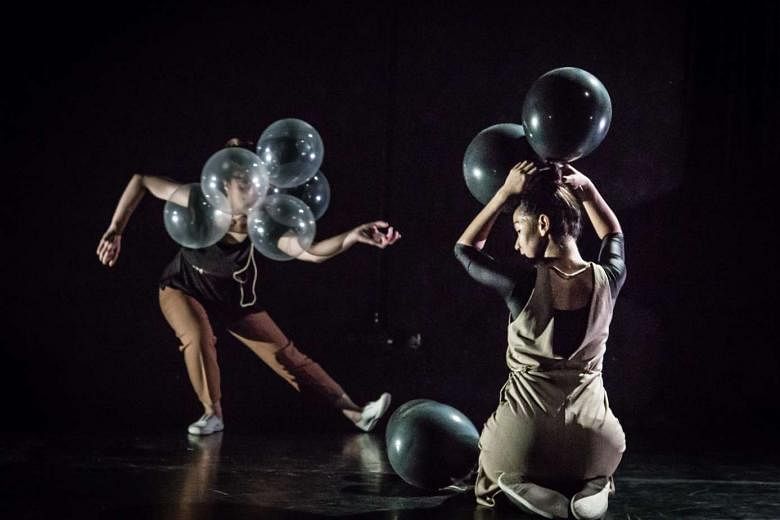REVIEW / DANCE
BELON
P7:1SMA
The Substation
Last Saturday
During the post-show dialogue of P7:1SMA's (pronounced as Prisma) performance, Belon, its young artistic director Norhaizad Adam, or Haizad as he is better known, was shy when answering difficult questions about the problematic discourse on the dichotomy between the traditional and contemporary.
Belon is a work that situates Malay dance forms within today's contemporary context.
Questions about the traditional and contemporary are always difficult to answer adequately without risk of stepping on a cultural minefield. However, the shyness Haizad displayed at the dialogue was not present in his full-length work.
Belon was clear in what it wanted to convey and it went beyond trite visual representation of culture.
The five young Malay dancers, for example, were dressed in simple everyday clothes. Their appearance did not allude to any contrived intercultural signifiers, yet they did not seem any less connected to their cultural roots. It showed a group of young dancers asking pertinent questions about their craft, as well as their individual and collective identities.
While Haizad has trained in both traditional Malay and Western contemporary dance forms, he was comfortable enough to use Malay dance, the form most familiar to him, as the departure point to reflect on his identity in the work. The result was an honest and transparent piece with numerous scenes that brimmed with interpretive potential.
In one, dancers removed their shoes at the edge of the stage before proceeding to the centre to begin dancing. Here, tradition is referenced with a simple everyday ritual that is familiar not just to Malays but also most cultures in South-east Asia.
Then, in an act of defiance, Haizad put on sneakers and performed a violent solo that dragged his feet on stage with an abrasive, fluid energy, leaving skid marks from the rubber soles of the sneakers on the floor. Juxtaposed against the gentler movements of the ensemble before, his solo seemed like an urgent need for him to make his mark, quite literally, leaving visible traces of his actions in the space.
Also well developed was the use of the balloon as a metaphor for thematic binaries such as freedom and entrapment.
Two female dancers, Nadia Abdul Malek and Hasyimah Harith, walked down a narrow path of light and did the basic lenggang movement in traditional Malay dance, their arms, wrists and hips swaying gently in unison upon bent knees. Nadia had transparent helium- filled balloons tied to her waist, which floated just above her head while Hasyimah's black balloons dangled limply from her waist.
This visual image was a powerful metaphor for the double-edged sword that is tradition - at once a burden and a means for offering clarity. It also alluded to how a lot of Malay dance forms achieve visual lightness through grounded movements.
In another scene, balloons were used as pillows. As the dancers rested their heads precariously on them, the probability of them bursting from the weight of the dancers' heads created palpable tension.
With Belon, Haizad showed that binaries need not always be antagonistic. Sometimes, both have to exist together to bring out the best in each other. This honesty was refreshing.

